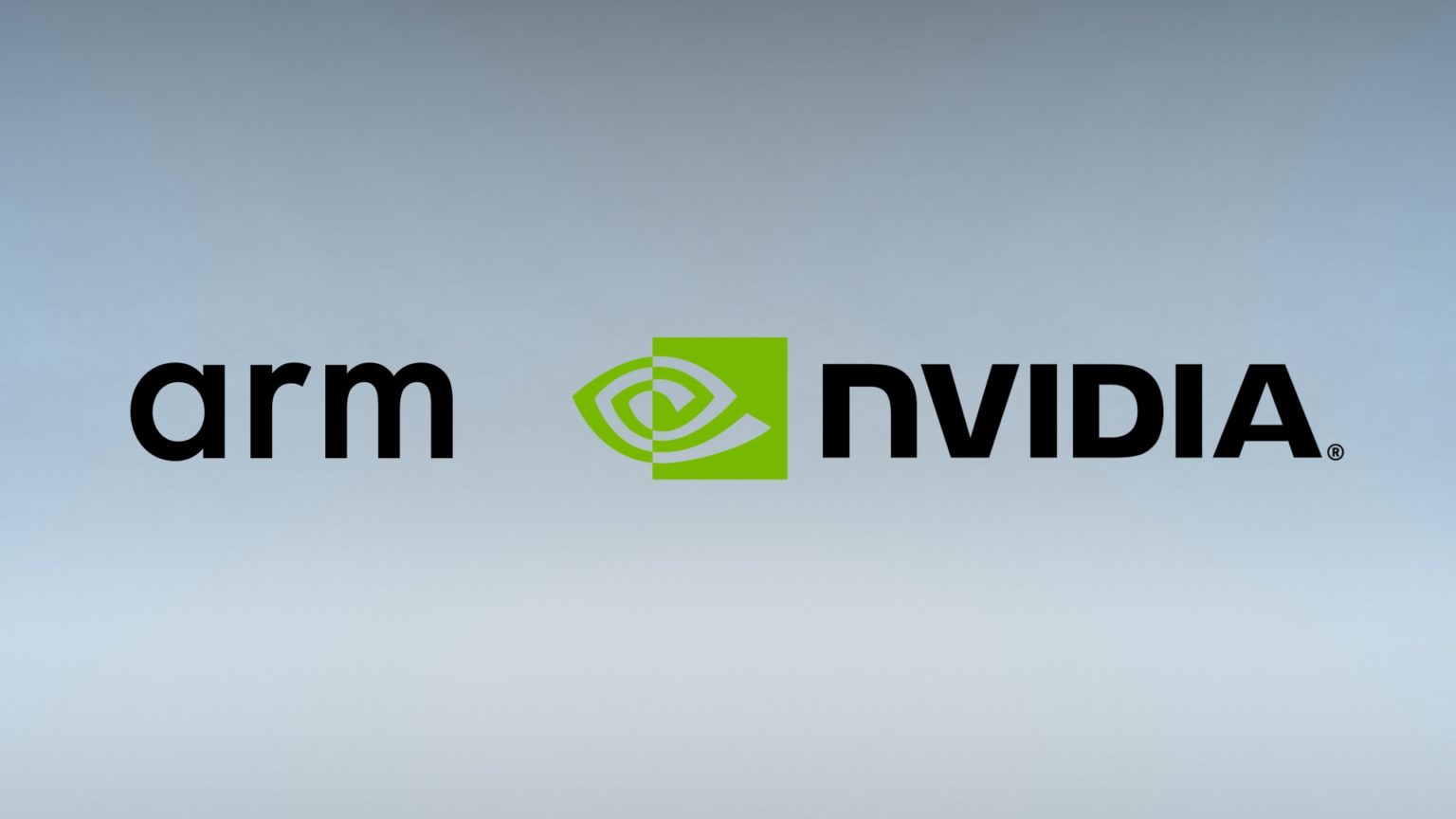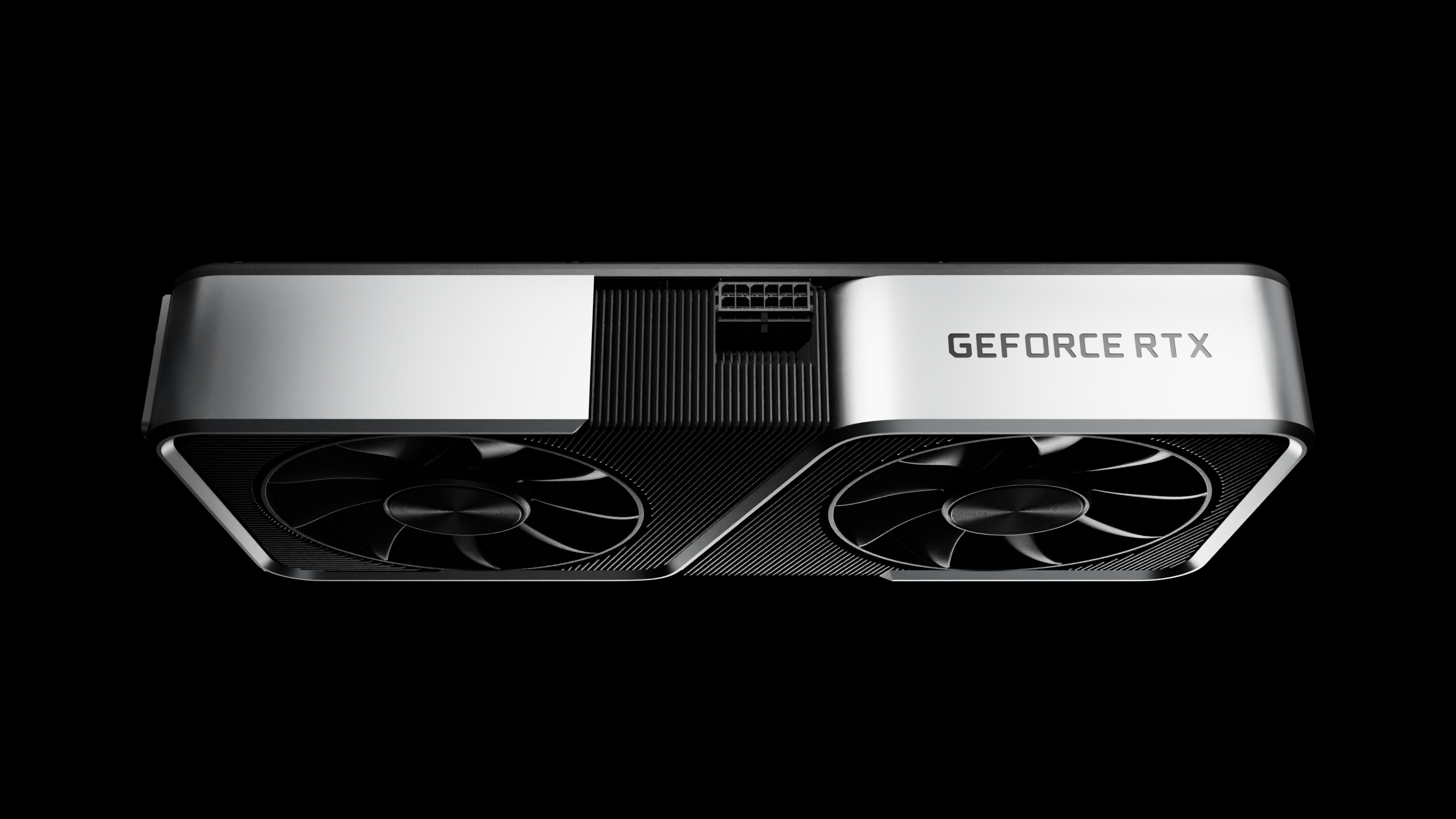Nvidia in 2020: year in review
Ampere made a very impressive entrance – but not without issues

In the consumer space, Nvidia’s year has been dominated by one big launch: that of the RTX 3080. There were two sides to the coin in this case, the first being the incredible power and performance uplift provided by these GPUs, which was quite frankly startling. But the flipside was that this astonishing feat was tainted by severe stock issues and failing to meet customer demand for these graphics cards by a long shot.
Naturally, there was more to 2020 than Ampere GPUs, and Nvidia also made a highly impressive breakthrough on the audio front – as well as an eye-opening acquisition which could have massive repercussions for the tech world. Let’s explore all this in more detail, before looking at what next year could potentially hold for Team Green.
- Where to buy an Nvidia RTX 3080
- We'll show you how to build a PC
- These are the best gaming laptops

Amping things up
Nvidia’s headline move for 2020 was the introduction of Ampere graphics cards, otherwise known as the RTX 3000 series.
Initially, three GPUs were revealed in September: the RTX 3090, the flagship RTX 3080 and RTX 3070, all launching in September except for the RTX 3070 which followed in October. The RTX 3060 Ti came later in December.
So, there are two major talking points here: performance and availability. Nvidia certainly excelled in the former category, with RTX 3000 GPUs representing a huge leap forward over last-gen Turing cards.
In our review, we were particularly impressed with the most recent offering, Nvidia’s RTX 3060 Ti, which punches way above its weight, and in certain scenarios outdoes the RTX 2080 Super.
There’s no more clear summary of how good Ampere is than looking at our best graphics cards roundup – Nvidia’s RTX 3000 GPUs hold four out of the top five spots at the time of writing (the only AMD product in that top five is in fourth place, the Radeon RX 5600 XT, which still wins the price-performance battle for 1080p gamers).
Sign up for breaking news, reviews, opinion, top tech deals, and more.
Nvidia also completely owned AMD when it came to ray tracing. While the initial Big Navi cards launched by AMD late in the year proved worthy competitors in terms of raw performance, even at the high-end – if still not quite there, though AMD’s RX 6800 is a compelling value proposition compared to the RTX 3070 – they fell flat in ray tracing. And while some folks will certainly argue that they can live without ray-traced sparklies in their gaming visuals, it’s pretty clear which way the industry is headed, just look at the new consoles.
So, while there can be no doubt that Ampere was a major victory for Nvidia in 2020, the problems cropped up when it came to availability. As soon as the various RTX 3000 models hit the shelves in their staggered launch from September onwards, they sold out in a flash.
And because of the low stock levels of GPUs, and huge demand, the problem was exacerbated by scalpers and bots stealing away sales – buying graphics cards just to resell them for extortionate prices on the likes of eBay.
This has caused a lot of frustration for would-be RTX 3000 buyers, who are having to scour web forums and keep their ears to the ground online – or check the likes of our current stock guides – in order to pounce when small amounts of new Ampere graphics cards drip onto the market. Nvidia has already admitted that stock issues will remain a problem until 2021, and possibly several months into the year, unfortunately.
All this left the door wide open for AMD Big Navi to come in and benefit from a whole load of hungry gamers wanting a new high-end graphics card, but as luck would have it – at least from Nvidia’s perspective – AMD stock problems have been just as bad, or indeed even worse from what we’ve seen and heard.
Of course, that has only compounded the frustration of consumers in terms of a great crop of graphics cards being launched from both companies, with little chance of actually getting one, unless you’re very lucky, very dedicated, or willing to pay a ridiculous premium to get one from a scalper.
So, Nvidia may have won the battle of the new GPUs in 2020 overall, but the real fight in actually getting cards on shelves so PC gamers could buy them was lost by both sides, sadly.

DLSS gets better
Nvidia’s RTX 3000 graphics cards made gaming in 4K resolution a realistic proposition in 2020. As we said in our review, the GeForce RTX 3070 is notable for finally bringing 4K gaming to the mainstream (and ditto for the RX 6800), costing less than half the price of what you’d need to buy to get this performance in Nvidia’s last-gen range (namely the RTX 2080 Ti).
And as we’ve already mentioned, these new Ampere GPUs also hugely increased ray tracing performance, while Cyberpunk 2077 waltzed onto the gaming scene in December to quite a bit of controversy, but it did show us just how good a full-on ray-traced game can look.
So these were big developments, but really, a lot of the heavy lifting was done in another area where Nvidia made weighty strides forward in 2020 – namely with a fresh incarnation of its DLSS tech (version 2.0).
DLSS allows for clever upscaling of resolution, effectively allowing your PC to run a game at a lower resolution, upscaled to a higher quality. So, for example, 4K resolution, or something which looks very much like it, can be achieved while only making 1440p demands of your graphics card. And this can further help to get the horsepower needed to turn ray tracing bells and whistles on.
To take some startling examples of the difference this tech can make, Call of Duty: Black Ops Cold War gets a massive up to 85% performance increase at 4K resolution thanks to DLSS 2.0. Cyberpunk 2077 runs at just 22 fps using an RTX 3090 (plus Intel Core i9-10900K) with maxed out graphics settings (4K ‘ultra’ with ray tracing on at maximum), yet turn DLSS on (in ‘performance’ mode) and it reaches 58 fps (not far off tripling the frame rate).
In other words, Cyberpunk 2077 goes from pretty much unplayable on max details to smooth running by flicking that DLSS switch. There is some image quality loss in ‘performance’ mode, but make no mistake – DLSS is a fantastic innovation for this kind of scenario.
Of course, the caveat is that games still have to be coded to support DLSS. And the concern we recently aired is that developers could become reliant on leveraging DLSS for playable frame rates in high-end gaming, when we have beefy Ampere – and Big Navi – graphics cards which are plenty powerful enough to do 4K with no assistance from such technology. That’s something to watch as the games industry moves forward next year.

Not just graphics – but audio
Nvidia’s RTX technology isn’t just about graphics, but also audio, as we saw earlier in 2020. Nvidia unleashed RTX Voice in beta form back in April, its noise canceling feature which really improves audio quality in voice or video calls made from your PC. Essentially, it very neatly filters out distracting background noises with clever AI processing tech – so when you’re working from home, and your dog barks at someone walking past the window when you’re on an important work-related video call, all that woofing will go unheard by your boss.
It’s cool to see a GPU utilized in a very different way – and a very useful one. This productivity-focused feature was – and still is – most welcome, particularly in a time when a lot of us are still working from home due to the Covid-19 pandemic.

GeForce Now goes live – and a mass exodus ensues
Nvidia’s GeForce Now streaming service finally shed its beta tag and officially launched in February, and almost as soon as it went live, disaster after disaster followed in terms of major publishers exiting stage left.
First of all, Activision Blizzard pulled all its games from GeForce Now, then Bethesda, followed by 2K Games, Xbox Game Studios and Warner Bros. That represented a whole host of big-name games which were yanked away from the platform in the first few months of GeForce Now’s existence, leaving a lot of unhappy gamers. A wobbly start with the official launch indeed, although the actual service itself offered an impressively robust performance in terms of streaming.
Nvidia subsequently changed the way in which games were drafted on board the streaming service, in order to avoid the licensing issues which caused all those major departures – and we then had some more positive news such as the return of Square Enix to GeForce Now.
Cyberpunk 2077 was, of course, the jewel in the streaming crown, giving gamers without lesser-powered PCs the chance to enjoy this title complete with ray tracing goodness – even on a Chromebook. There were complaints at the game’s launch – naturally – with long queues, and some performance issues, which was unsurprising given the rush of folks trying to play the latest and greatest game from CD Projekt Red.
However, it’s clear enough that behind all the hiccups – and some pretty messy fails at that – Nvidia is onto something good with GeForce Now. Hopefully when the company manages to renegotiate and get back some of those big titles which fled in the early days, the streaming offering will only get stronger and stronger.

ARM and a leg
Nvidia made a big acquisition in 2020. A huge one. As you’ll likely recall, this was the purchase of ARM for $40 billion, and as we covered back when this happened in September, it’s a major shift in the tech world – if the deal actually goes through.
Exactly what the repercussions will be – and how the acquisition might pan out – is anyone’s guess, really. But Nvidia is making promises not to rock the boat, that things will continue as they are, and ARM’s neutrality will be maintained – basically trying not to scare any of ARM’s big clients, as you might imagine.
So yes, this is a big one – but at this point, pretty much still only a big question mark. As one analyst, Geoff Blaber of CCS Insight, stated, it’s “very difficult to see how Nvidia can balance its own requirements with that of the ARM ecosystem”. It still remains to be seen whether the deal will clear all regulatory hurdles globally, of course.

Concluding thoughts
On the whole, 2020 was a good year for Nvidia, with the crowning glory being its RTX 3000 graphics cards, which proved to be nothing short of some of the best GPUs ever made. The performance leap with Ampere was giant, but the equally giant stumbling block was the fact that so many people couldn’t – and still can’t – buy a card due to stock being thin on the ground, and demand being through the roof.
That’s left a bad taste in the mouths of some, and those people would surely have defected to AMD – if Big Navi graphics cards hadn’t suffered the exact same problem. As it is, we’re in the rather odd position where not performance, but simply availability, is likely to determine the winner of this particular battle of the GPU wars. If AMD can get its cards on the table in meaningful quantities first, it probably won’t matter that they are lacking on the ray tracing front compared to Nvidia – they will still sell by the bucket load.
What we can hope to see in 2021 is the resolution of stock problems for both Nvidia and AMD, and potentially fresh cards from Nvidia – an RTX 3080 Ti is again rumored (it was a while back, too), along with a lower-end RTX 3050 card (yes, it appears Nvidia is ditching GTX models entirely, and going all-in with ray tracing). The latter is particularly anticipated as a more wallet-friendly way of getting some seriously beefed-up Ampere performance.
Nvidia should also have RTX 3000 laptop chips inbound at the start of 2021, and they’ll probably be unveiled at CES, further powering up gaming notebooks – with the tantalizing possibility that they could be paired with AMD Ryzen 5000 mobile CPUs.
The key aspect going into 2021, though, will be resolving stock issues, and if AMD beats Nvidia to the punch in that respect, it could make a wobbly start for Team Green. On a broader level, the development to watch will, of course, be whether that ARM deal actually goes through – and if so, how Nvidia’s going to work the practical aspects of that acquisition.
Darren is a freelancer writing news and features for TechRadar (and occasionally T3) across a broad range of computing topics including CPUs, GPUs, various other hardware, VPNs, antivirus and more. He has written about tech for the best part of three decades, and writes books in his spare time (his debut novel - 'I Know What You Did Last Supper' - was published by Hachette UK in 2013).